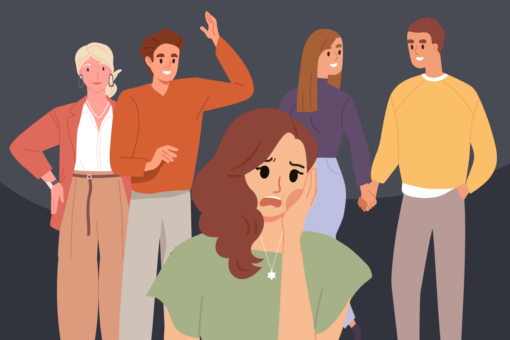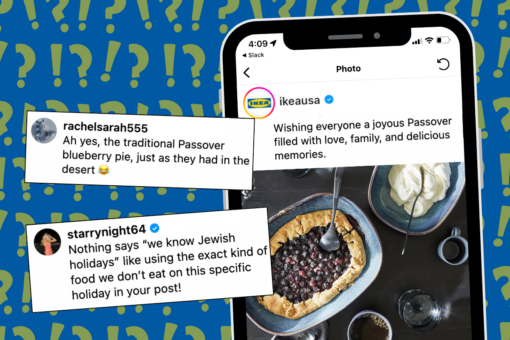One of the main things that have been getting me through the past few months is revisiting my tarot practice. I’ve read tarot since my mother gifted me a deck when I was 16. In college it became my party trick — I’d pull away from a social gathering to read someone’s tarot in their room. It was a way to get to know a close friend more intimately or have a meaningful interaction with a stranger whom I’d never talk to again.
Feeling directionless and stuck in a routine, I recently decided to go to my local witch shop and treat myself to a new tarot deck. Now, there is a well-known rule that you can’t buy your own tarot deck — but let me put an end to that right now. That rule was created as a marketing scheme. So if that’s what’s been preventing you from starting your tarot practice, this is a sign to go get yourself a deck today!
Within the first week using my new deck, I drew the card “Wheel of Fortune” three times. I shuffle pretty intensely and then lay out every single card on my bed and randomly select cards, so it was bizarre that I kept pulling this particular card. I noticed that the letters T, A, R, and O were on the card, but when I looked closer, I realized that when I read it left to right, as we read Hebrew, it reads as “TORA.”
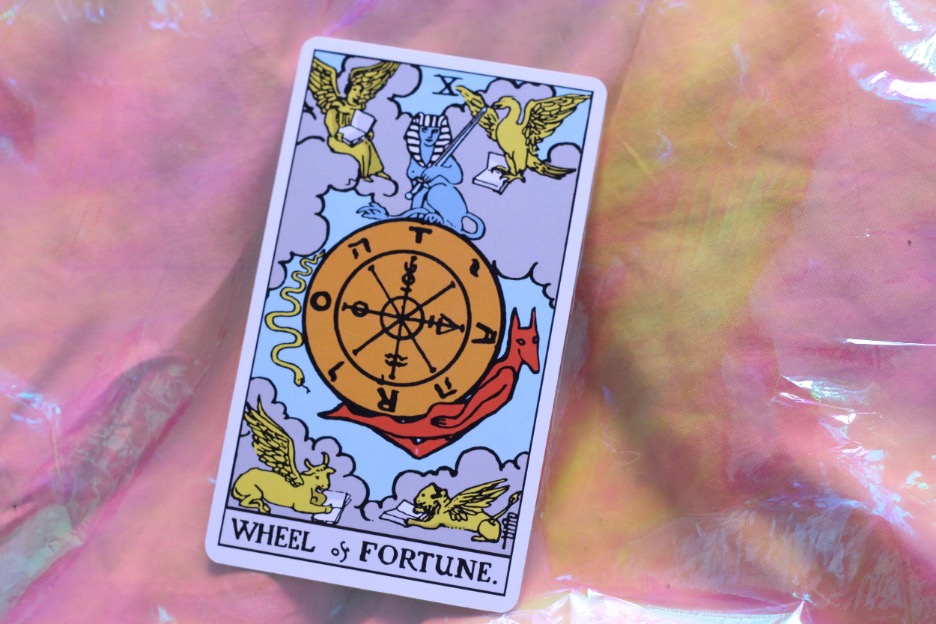
I felt like I was cracking some huge code, but one Google search later, I realized I was just late to the game. And it actually makes a lot of sense.
The word Torah is often mistranslated to mean “law,” but its meaning is actually closer to “guide.” Our learnings from reading the sacred text is meant to help enrich our lives and reflect on what we are putting out into the world. Likewise, reading tarot isn’t a practice that is geared towards predicting the future or telling you what to do. Whatever cards I pull are meant to help me reflect on myself and give guidance for whatever is to come.
So what’s the connection between tarot and Torah? First, a quick crash course on the anatomy of the tarot deck. The deck is broken into two parts: The Major Arcana and The Minor Arcana.
The Minor Arcana is made up of 56 cards with four suits. Each suit also has four face cards. Sounds familiar? Just like a deck of playing cards, and yes, you can read tarot using any old deck of cards! In tarot, the four suits are Swords, Wands, Pentacles (or Coins), and Cups. These correspond to Spades, Clubs, Diamonds, and Hearts.
The Major Arcana is made up of 22 cards that aren’t suited and represent karmic influence, often thought of life lessons — all-around excellent for any type of reflection.
Now you might have just read the number 22 and realized that number is also significant in Judaism. There are 22 letters in the Jewish alphabet. In the book Kabbalistic Tarot, Dovid Krafchow explains that this was useful when the Greeks invaded Israel and outlawed the study of Torah. The Jews masqueraded playing games with the tarot deck while secretly practicing Hebrew. But Krafchow explains that once the Maccabees drove out the Greeks, the use of tarot cards became obsolete… at least for the next 500 years or so until the Inquisition, when Torah became outlawed once again.
Krafchow also explains the ties between Kabbalah and tarot. The four suits of the Minor Arcana refer to four different journeys or areas of our life. Swords is all about knowledge and thought, Cups deals with emotions and love, Pentacles involves your health and wealth, and finally, Wands is creativity, passion, and sexual energy. The suits also correspond to the four kabbalistic worlds of Yetzirah, Briah, Asiyah, and Atzilut, respectively. Looking at the different suits using these guidelines or pathways leads the reader to find new meaning in each card.
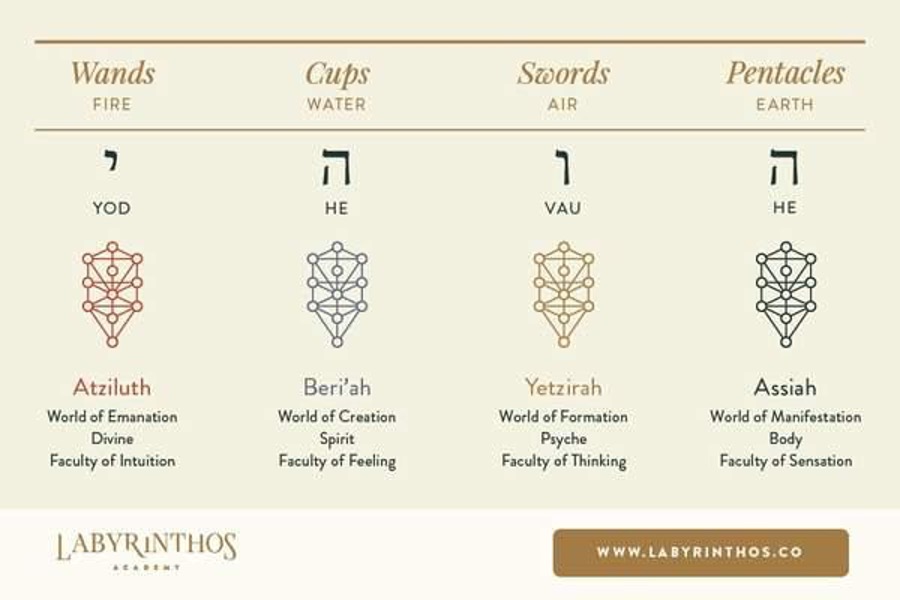
Kabbalah means “receiving” or “received tradition,” which perfectly aligns with the purpose of tarot — we receive guidance for something that remains unknown, in order to help us on our own journey towards enlightenment. The Jewish people are always on a search for truth the same way the reader of tarot is.
Certain tarot cards even have Jewish symbolism in their illustrations. If you’re semi-familiar with tarot, you’ve probably seen the Rider-Waite deck. This deck was created in 1909 and is widely known as the most popular or standard deck. The images I’m discussing are from the Rider-Waite deck.
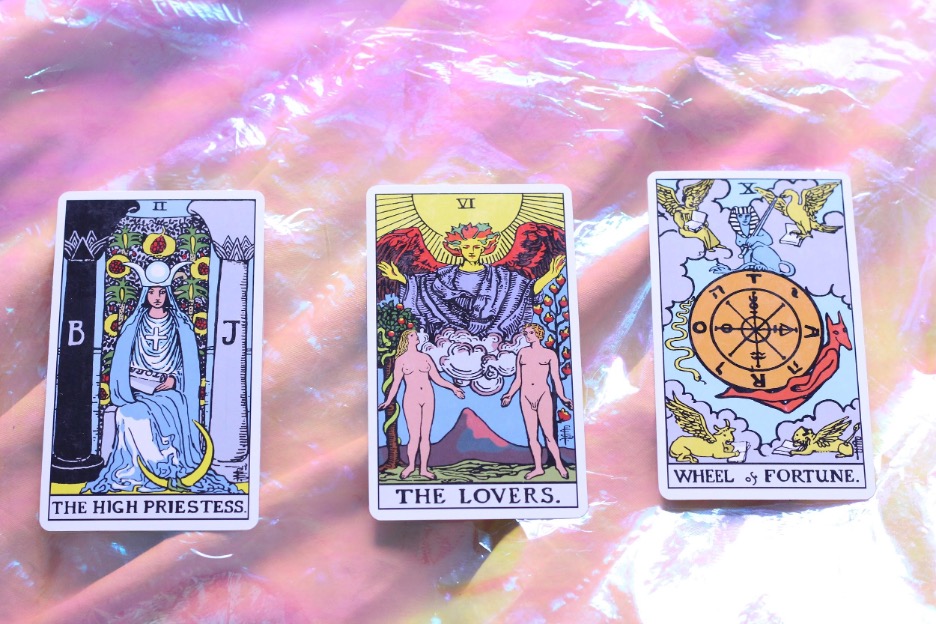
The Lovers
The Lovers is all about being completely consumed by a person and an idea. Often portrayed as love and romance, it’s more about the mess that comes along with intense lust or desire.
This card is illustrated with the famous scene from Bereshit, or Genesis: Adam and Eve in the Garden of Eden, along with the snake and the forbidden fruit. For me, this card symbolizes their exile from the Garden of Eden. It’s the mess that is left in the wake of Eve’s uncontrollable desire for knowledge.
The High Priestess
The High Priestess reminds us that we have sacred understanding inside ourselves which holds the answer to whatever we are searching for. She’s intuition, the divine feminine, and the subconscious mind.
Even though she’s decorated with a cross, a symbol of Christianity, there are plenty of Jewish details on this card, too. Torah scrolls rest on her lap, and she sits between the pillars of Solomon’s Temple. Looking behind her, you can see pomegranates in the background — a fruit we usually eat during Rosh Hashanah that symbolizes fertility and new life.
The Wheel of Fortune
Wheel of Fortune is all about the limit of our free will. It’s about riding the waves of life when you have no idea what is to come. Not knowing the future means the possibilities — of greatness or of sorrow — are endless. There’s no way of knowing what is to come, so we just have to hang tight. It’s about how the only thing we can control is ourselves and how we respond to a situation.
Around the wheel on the card we can see the word ‘TORA” as well as “יהוה” — the unspoken Hebrew word for God.

